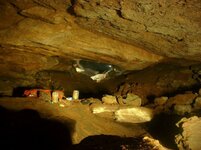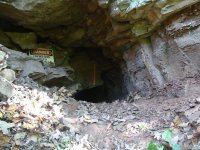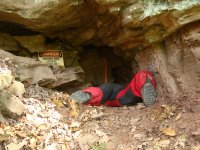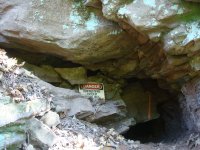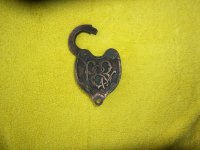Bumbalawski
Full Member
I had posted this reply on another thread, but thought it may help some with a question concerning this cave detecting technique.
I have a hand held FLIR E4 camera. It cost right at $1000. It can be hacked to E6 capabilities prior to a certain camera mfg. date. Mine is hacked to the E6, which is an immense improvement over the out of the box E4. I use it for cave detection since I am a caver. We use it in digging out sinkholes and warm spots. Some sinks are trash filled with various metals. Unless in direct sunlight and exposed to the sun, the metals do not give off a different temperature reading than the surrounding soil. Even in direct sunlight, buried metals do not display a different heat signature than the surrounding ground. At least what I have noticed to date. I will perform some field test in the near future to see if there is anything to this theory. It does work well with airflow detection, which is a primary tool for finding caves. But it is done usually around 60° and above and 32° and below, since cave temperatures vary from low 40's to upper 50's, depending on the cave environment.
These pictures are an example of a cave entrance issuing cold air down the from the entrance. The entrance was not visible from below and the original entrance was no larger than a groundhog hole. I have been very successful finding new caves using this technique.
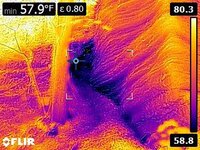
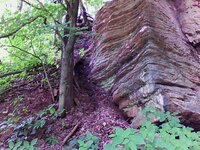
I have a hand held FLIR E4 camera. It cost right at $1000. It can be hacked to E6 capabilities prior to a certain camera mfg. date. Mine is hacked to the E6, which is an immense improvement over the out of the box E4. I use it for cave detection since I am a caver. We use it in digging out sinkholes and warm spots. Some sinks are trash filled with various metals. Unless in direct sunlight and exposed to the sun, the metals do not give off a different temperature reading than the surrounding soil. Even in direct sunlight, buried metals do not display a different heat signature than the surrounding ground. At least what I have noticed to date. I will perform some field test in the near future to see if there is anything to this theory. It does work well with airflow detection, which is a primary tool for finding caves. But it is done usually around 60° and above and 32° and below, since cave temperatures vary from low 40's to upper 50's, depending on the cave environment.
These pictures are an example of a cave entrance issuing cold air down the from the entrance. The entrance was not visible from below and the original entrance was no larger than a groundhog hole. I have been very successful finding new caves using this technique.




